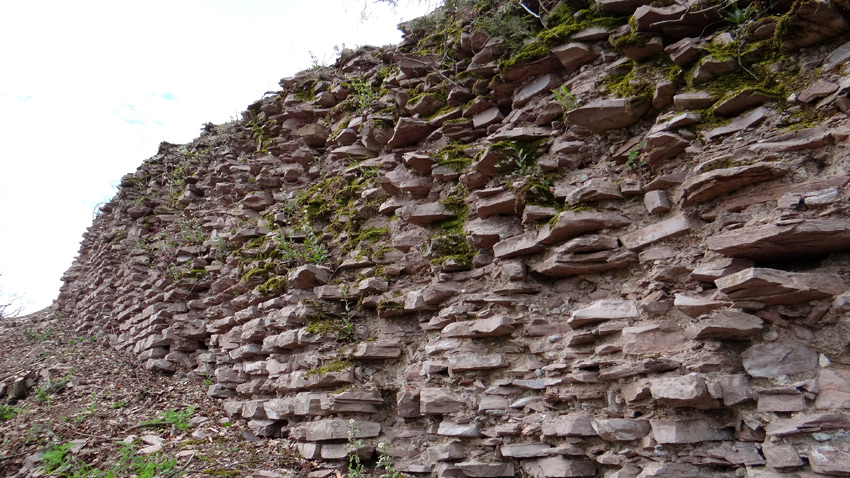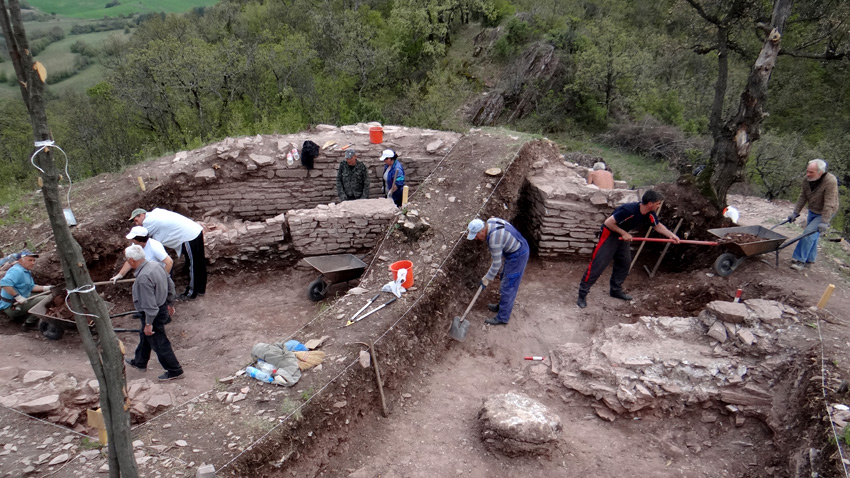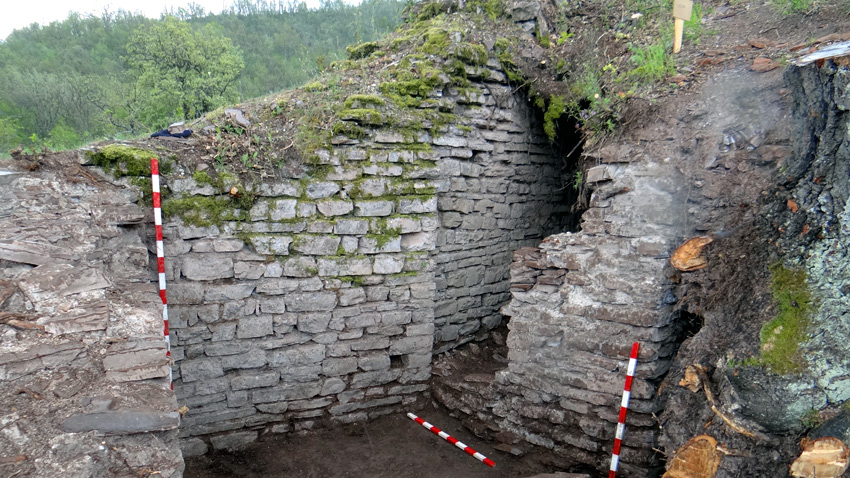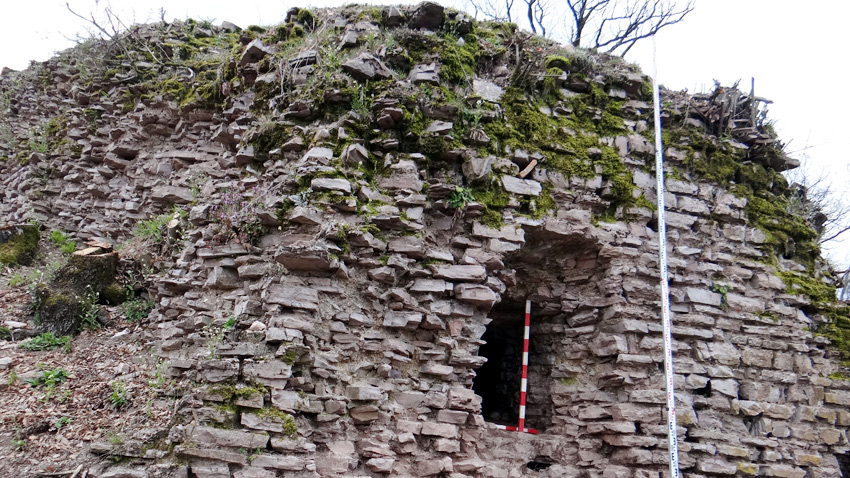Earlies this year, close to the village of Bania in Panagyurishte Municipality, Central Southern Bulgaria, archeological excavations opened of a castle in a picturesque locality. It is called Bansko Kale and boasts hot mineral springs and an ancient bath, where the name of the village Bania comes from. The castle however has not been archeologically explored so far. Research has become possible after the Municipality of Panagyurishte has pitched for a project for the socialization of the castle.

 Radio Bulgaria talked to Associate Prof. Valeri Grigorov, PhD, leader of archeological digs that closed recently:
Radio Bulgaria talked to Associate Prof. Valeri Grigorov, PhD, leader of archeological digs that closed recently:
„This castle is curious as it is part of a sophisticated system of fortifications in the area. These are spaced out at 5 to 6 km of each other. It is important for us to find out which of the castles functioned simultaneously and how they were connected. In this sense I have been purposefully exploring two of them for the past ten years. The first one is Krasen, the biggest medieval town in the region. It has two fortifications, a big suburb, a few neighborhood necropolises and a few churches. The second site is a small guard castle in the locality of Koychevo Kale. Following a few strong archeological seasons there we stopped excavations of both castles so as to carry out conservation of architectural finds.”
Prof. Grigorov went on to say that timely conservation of finds parallel to research was vital. For this purpose there is financing allocated to conservation works after the end of every archeological season. What are the results from the season at Bansko Kale?

„We found out that the fortification was in use during two historical periods. Two fires swept the site over time. One of them occurred in 5-6 c. AD during major raids of Huns, Avars and Slavs. The second fire occurred in 12-14 c. when it was most probably part of a military campaign of the crusaders from the Third Crusade in 1189 or of the offensive if Bulgarian Tsar Kaloyan. The lack of enough finds so far prevents us from dating events more precisely, and we are still at the start of research. One of the interesting artifacts that we came across in the second burnt layer is a heavy arrow for a cross-bow. Such arrows were usually used by western knights and suggest their possible presence in this dramatic moment from the history of the site. There is already growing interest in the Bansko Castle. During digs and the conservation there was a flow of tourists. All this obliges us to make sure the site is kept in a decent condition. After the end of research we ordered and had produced a few information boards which give an account of our work and its results.”

The archeologists organized public lectures for local communities. The local residents wanted to know not only about archeological results but also about the future exploration and conservation of the castle.
„I am glad that today society is mature enough to join discussions focused on heritage and its conservation”, Dr Grigorov says. “People are more sensitive and critical of not good enough conservation and restoration practices. There is consensus between the community and archeologists and it is about more respect for the authenticity of monuments. In any case restoration should not exaggerate archeological facts.”

During excavations Valeri Grigorov also worked with an interesting collection of archeological objects compiled by a local researcher. It features coins from different periods, jewels and two stamps. The stamps have no analogue so far. The curious thing is how this collection was compiled. Most objects were found during gold panning in the river. The local Banska Luda Yana is one of the richest in gold in this country. Ancient and medieval settlements were located close to the river and the warm mineral springs. Erosion and heavy rains would periodically wash away cultural layers and this way many objects ended up in the riverbed.

English Daniela Konstantinova
Photos: courtesy of Associate Prof. Valeri Grigorov, PhD
Archaeologists have explored a necropolis in the Kavatsi area near Sozopol. The perimeter in which it is located is part of the history of Apollonia Pontica and is dated to the 4th century BC. "This is a site with interesting burials in which a nuance..
On November 10, 1989, at a plenum of the Central Committee of the Bulgarian Communist Party, Todor Zhivkov was removed from the position of General Secretary - the highest position in the party and the state. What happened at the..
Archaeologists have discovered a very rare and valuable glass bottle in a 2nd-century tomb in the southern necropolis of the Roman colony Deultum near the village of Debelt (Southeastern Bulgaria). What makes it unique is that it depicts the myth of..

+359 2 9336 661
